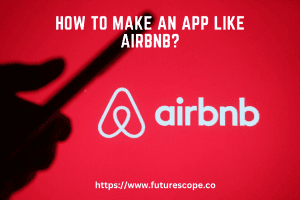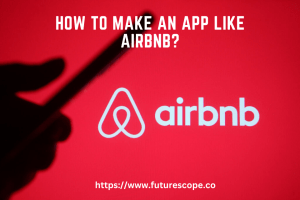What We Have Covered in This Article
Last Updated on February 9, 2023 by Editor Futurescope
Developing an app is exciting no doubt. But this excitement can fade down quickly once you realize how much it costs to create a decent app.
A recent study by GoodFirms revealed that the cost of building an average simple mobile app ranges from $24,830 to $59,150, with that figure jumping up to $137,150 for complex apps.
But don’t let the costs discourage you from building this important business tool! The following are some ways to develop a great app without breaking the bank.
Conduct proper research and set clear goals
Before beginning development, it’s essential to define the main Key Performance Indicators (KPIs) that you want to track. This will help you measure the success of your app and determine areas for improvement. To do this, you should choose the right tools for measurement and data analysis. This could be as simple as using a spreadsheet to track key metrics or using more advanced analytics software.
Market research plays a vital role in this step. It will give you a better understanding of the market, your competition, and consumer preferences. This information can be used to validate your idea and ensure there is a real demand for your product. Additionally, market research can help you identify unique features and opportunities for differentiation, allowing you to create a product that stands out from the competition.
By focusing on specific, unique features, you can also reduce development costs and improve the app’s usability. This will help ensure that your product is both affordable and user-friendly, making it more likely to be adopted by consumers.
In conclusion, conducting proper research and setting clear goals is a critical step in the development process. By doing so, you’ll have a solid understanding of the market, your target audience, and the potential benefits of your product, helping you to create a successful app that delivers value to consumers.
Have the right team
It’s important to have a skilled, experienced, and up-to-date development team to ensure the success of your app. You should also look for people that are passionate about your project and have the right skills and experience to build a high-quality product.
For example, if you’re developing a Powerapps-powered app for your business, you should consider hiring a Microsoft Gold Partner to guide you through the process. These experts will help you avoid costly rookie mistakes and increase the chances of your app succeeding.
Interact more with your team
Having a solid development team is great but it’s not enough. You must build a strong rapport with them by interacting and communicating your needs to them regularly.
As the person with the app idea, you have most of the answers and must therefore remain approachable. Working together with your team will ensure that you reduce reworks which in itself is cost-effective.
Have a detailed app product specification
At this point, you need to clearly describe the app, the business context, the user persona, user stories, and functional specifications. This will ensure that everyone on the development team is on the same page, making the process faster and more cost-effective.
A well-defined specification acts as a blueprint for the development team, enabling them to make informed decisions and prioritize tasks effectively. This helps to minimize the risk of deviations from the original plan, reduce the likelihood of misunderstandings, and ensure that the final product meets the needs and expectations of the stakeholders and users.
Choose the right platform
Picking a platform that matches your app idea will go a long way in reducing development costs. For starters, consider whether a native or cross-platform approach will be best for your app.
Native apps are built specifically for one platform such as iOS or Android, using the native programming language of the platform like Swift for iOS and Java for Android. These apps tend to have the best performance and the most access to device-specific features. On the downside, they are usually more expensive to develop since they require separate development for each platform.
Cross-platform apps can be used on multiple platforms and are built using a single codebase. They are generally more cost-effective, as they require less development effort and can be deployed to multiple platforms with a single codebase.
However, they may not have the same level of performance as native apps, and may not have access to all device-specific features.
When choosing a platform, consider your budget, target audience, and the specific features and functionality you want your app to have. If you’re working with a limited budget and want to reach a broader audience, a cross-platform approach may be the better option.
But if you’re looking for the best performance and access to device-specific features, a native approach may be the way to go.
Build a Minimum Viable Product (MVP)
An MVP will help you get to market quickly, gather user feedback, and adapt as needed. It also helps you check the quality of your product and attract the first customers.
By developing an MVP, you’ll be able to validate your app’s market fit and make any necessary adjustments before investing more time and money into the development process. This approach is not only cost-effective but also allows you to test the waters with a smaller investment, and iterate based on user feedback.
Besides, it helps you minimize development costs and risks, while still allowing you to gather valuable insights that can be used to improve your app before a full launch.
Test and improve
It’s crucial to test your app before releasing it to the market. Ensure you get feedback from a variety of users, including beta testers and early adopters, and make improvements as needed. This allows you to identify any potential issues early on, which will ultimately save you time and money in the long run.
Testing also helps you ensure that your app is user-friendly, easy to navigate and provides a good user experience.
Conclusion
Cutting costs during the development process doesn’t have to be a sacrifice of quality or creative vision. By following the tips we’ve covered in this article, you should be able to reduce your app development costs and maximize your investment.
From doing thorough market research to starting with an MVP, there’s no shortage of ways that you can save on cost without sacrificing quality.
Put these tactics into practice today so that you can successfully launch on time and under budget – then start growing! Good luck!









